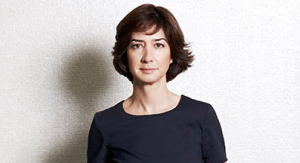
After more than 40 years of operation, DTVE is closing its doors and our website will no longer be updated daily. Thank you for all of your support.
YouTube creators ‘defining the future’ of content, says EMEA chief
 YouTube is emerging as the key forum for creative experimentation and the platform of choice for under-24 year-olds, and while many creators are not “an obvious fit” for traditional media, they are building “the future of the content industry”, according to Cécile Frot-Coutaz, head of YouTube EMEA.
YouTube is emerging as the key forum for creative experimentation and the platform of choice for under-24 year-olds, and while many creators are not “an obvious fit” for traditional media, they are building “the future of the content industry”, according to Cécile Frot-Coutaz, head of YouTube EMEA.
Speaking at IBC, Frot-Coutaz said that YouTube was primarily “a technology platform” whose USP was to enable “participation” on its audience, she said. This had shifted what people expect from a content provider, she added.
She nevertheless claimed that YouTube can still be a mutually beneficial partner both for broadcasters and pay TV providers.
Frot-Coutaz said that there is now a huge difference in the age profile of users that view content on TV and those who view it on mobile devices, with the implication that this mirrors the age profile of YouTube. Content providers “need young people at scale”, she said.
Addressing the growing influence of YouTube content creatoers, she said that YouTube has “led to an explosion of content catering to every interest”, and has changed the rules about what constitutes compelling content.
YouTube content creators are similar to traditional content creators, focusing on similar genres, she said. The main difference is that the individuals involved are “also business owners” that make money from YouTube but also monetise their profiles off YouTube through merchandising, retail and other activities.
She said that there had been a 70% increase over the last year in the number of users who follow and interact with YouTube creator channels.
She said that the number of YouTube channels making six figures or more has gone up by 30% in the last year alone.
Frot-Coutaz said that creators harness “the power of anti-broad appeal fan relationships” that “appeal to those in the know”, quoting Kevin Allocca, head of trends at the video sharing site.
Young people now turn first to YouTube for news and entertainment, she said.
Frot-Coutaz said that YouTube was also increasingly a place where important conversations about politics and society take place.
“YouTube is increasingly a place that breaks down genre lines,” she said.
Frot-Coutaz said that advertising was going to digital platforms including YouTube, but that this was primarily at the expense of print rather than TV, at least so far, and that the video platform could be an ally to broadcasters.
She said that media companies looked on YouTube as an important channel to raise awareness of their content. Broadcasters can take advantage of the platform to engage with audiences, she added, citing the EBU’s creation of a channel focused on Eurovision and Spanish broadcaster RTVE’s launch of a live stream of the activities of its Operación Triunfo talent show’s contestants, leading to a 10% growth in the show’s audience.
She said that YouTube’s pay TV partners had made the service available on their set-top boxes.
Frot-Coutaz said that the shift towards online content also brought challenges, including audience measurement.
YouTube data is now part of Germany’s industry currency for audience measurement, the AGF.
Another challenge is content that “crosses the line”, even though this is “a fraction of one per cent”, she said.
She said that YouTube was now “raising the profile of good content”, particularly news.
Piracy, a third major challenge, is being taken on by YouTube with Content ID to enable content owners to trace and block content on the site, but also to monetise user-generated content.
“YouTube allows for creative experimentation on an unprecedented scale,” she said.

